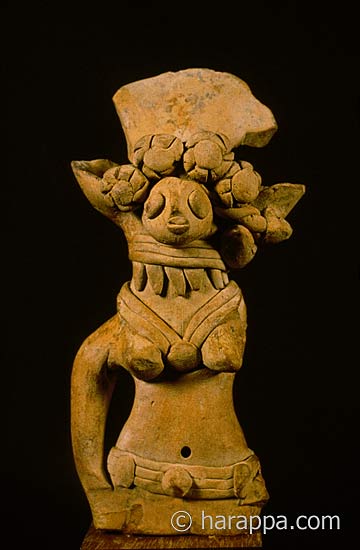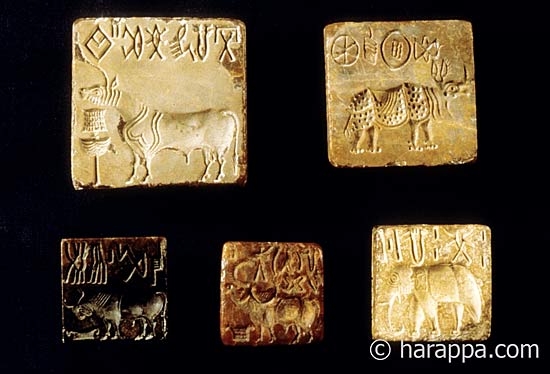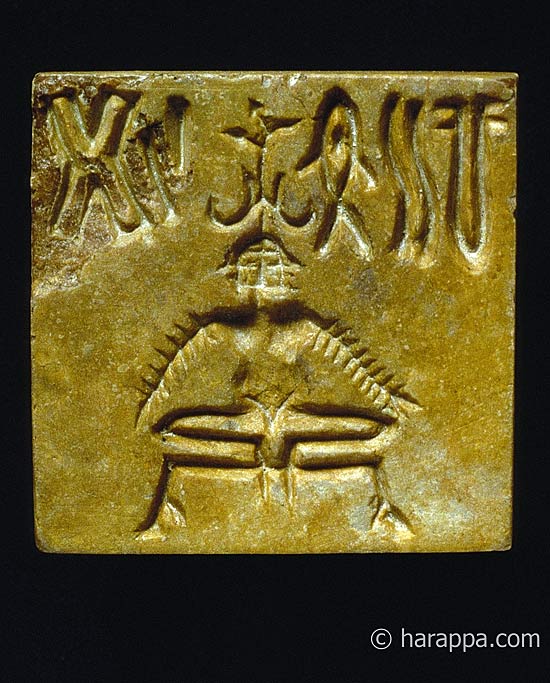
Female figurine with four flowers arranged
on the front part of a fan shaped headdress with cups at two sides and braided
edging. This figurine is heavily adorned with a triple strand choker with
pendant beads, a double strand necklace with central disc pendant, and a triple
strand belt with disc shaped ornaments.
Material: terra
cotta Dimensions: 13.2 cm height
Harappa National
Museum, Karachi, HP 1603

0ther animal motifs appearing on seals found primarily at the largest cities include dangerous wild animals like the rhinoceros, the water buffalo, the gharial (crocodile) and the tiger. All of these animals would have been familiar to people living at the edge of the thick jungles and swampy grasslands of the Indus plain and they were revered as totemic animals, closely associated with important myths and legends.

Seal depicting a deity
with horned headdress and bangles on both arms, standing in a pipal (sacred fig)
tree and looking down on a kneeling worshiper. A human head rests on a small
stool. A giant ram and seven figures in procession complete the narrative. The
figures wear a single plumed headdress, bangles on both arms and long skirts.
Several script signs are interspersed with the
figures along the top of the seal and a single sign is placed at the base of the
tree. This scene may represent a special ritual sacrifice to a deity with seven
figures in procession. The seal has a grooved and perforated boss and the edges
are worn and rounded from repeated use.
Material: fired
tan steatite with traces of glaze
Dimensions: 4.06 x 3.95
cm, 0.8 cm thickness.
Mohenjo-daro DK 6847
Islamabad
Museum, NMP 50.295
Mackay 1938: pl. XCIV, 430; pl. XCIX,
686a.
 http://www.harappa.com/indus/33.html
http://www.harappa.com/indus/33.html